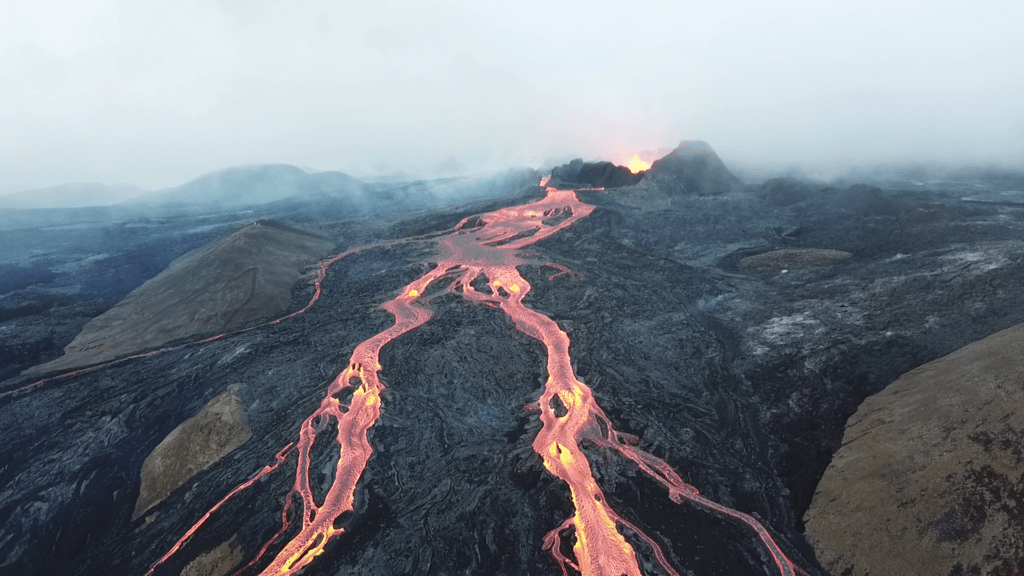Over the last couple of days, Iceland has experienced over 7,000 earthquakes, sparking the potential of a major volcano erupting in the country. Will this place aviation operations at risk of disruption?
The Icelandic Met Office has been tracking seismic activity since July 4, with there being over 480 earthquakes on July 6 alone.
These earthquakes have been minimal in nature so far, but the records “strongly suggest that magma is migrating towards the surface”.
What is The Met Office in Iceland Saying About The Potential Volcano?

The Met Office in Iceland has put out two updates over the course of July 7, one describing today’s seismic movements, as well as the over 7,000 recorded since July 4.
“Shortly before midnight on 6 July, a seismic sequence commenced close to Eldey island on Reykjanes ridge, approximately 10 km southwest off of Reykjanes peninsula.”
“At 15:00 today (7 July), over 480 earthquakes have been measured there. Thereof 38 earthquakes have been manually analyzed and checked.”
“Ten earthquakes larger than 3 and six larger than 4 have occurred, the largest being 4,5 in magnitude at 5:06 this morning.”
[monsterinsights_popular_posts_inline]
“Earthquake sequences in this area are not uncommon, but this current activity is unusually high. In light of that, the aviation color code for the Eldey volcanic system will be changed to yellow.”
On the total since July 4, this is what the Met Office in Iceland had to say on a potential volcano erupting in the country:
“Since the onset of the seismic swarm in the Reykjanes peninsula on 4 July, 7000 earthquakes have been recorded in the area between Fagradalsfjall and Keilir.”
“Roughly 300 earthquakes have been manually checked. This activity is caused by a new dike intrusion in the area, namely between Fagradalsfjall and Keilir, and its center is believed to be between Litli-Hrútur and Litli-Keilir.”
“A total of 17 earthquakes larger than 4 have been recorded and 50 events larger than 3. The largest earthquake occurred at UTC 8:21 on 5 July and was 4,8.”
“The largest earthquakes are felt widely in the SW-area, from Hella to the east and towards Snæfellsnes peninsula in the north.”
“A continuation of this activity is expected, but seismic activity has decreased somewhat in the vicinity of the dike.”
“Seismic activity has continued in the area between Keilir and Fagradalsfjall, which is interpreted to be triggered events.”
Is The Aviation Industry At Risk from This?

“A continuation of this activity is expected, but seismic activity has decreased somewhat in the vicinity of the dike.”
This is an important point to make at this moment in time.
With seismic activity reducing, it could very well be the perspective that the eruption may not happen, but with warnings placed by the Iceland Met Office on a potential eruption of a volcano, this will be something to look out for.
Iceland has had its fair share of volcano-based activity over the last 20 years, the most major being on Grímsvötn, which caused major disruption to air travel in the north-western parts of Europe in May 2011.
Eyjafjallajökull was another one that took place in April 2010, which required the closure of airspace over many parts of Europe as well.
Finally, another one happened in Holuhraun, where the eruption began on August 29, 2014, and ended in February 2015, which affected flights, but not as many as Grímsvötn & Eyjafjallajökull.
With a high number of earthquakes recorded in this recent seismic activity, if a volcano does erupt in Iceland, this could produce similar levels of disruption to the aviation industry.
As It Stands: Flights Operating Normally Out of Keflavik…

At the time of writing, aircraft have been arriving at Keflavik International Airport, the main airport of the country, relatively fine, as per data from RadarBox.
However, the next few days ahead will be interesting to watch to see if this volcano does erupt in Iceland, as well as what kind of disruption it will cause across Europe if this does happen.
This is a developing story. More to follow in due course.









